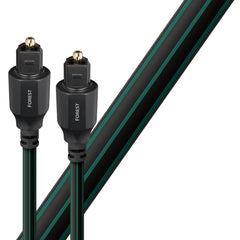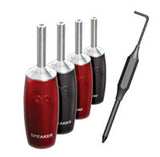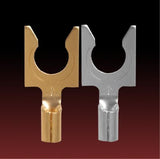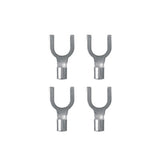AudioQuest Forest Optilink Full Size Toslink Cable
Forest Optical Cable Full size to Full size - Includes mini adaptor
* Low-Dispersion Fiber
* Low-Jitter (Digital Timing Errors)
* Precision Polished Fiber
* Full size to full size plug
When the question is "how can a fiber-optic cable change the sound?" ... the answer is easier to explain than for almost any other type of cable. If the light source were a coherent laser, firing into a vacuum, all the light would stay straight, arriving at its destination at the same time. Even if the LED light source in a Toslink system were coherent, the light entering a fiber-optic cable is scattered and dispersed by imperfections and impurities in the fiber. This can be measured as a loss of amplitude ... but amplitude is not the problem, a 50% true loss would have no effect on sound quality.
The problem is that the dispersed light does get through the cable, but only after it has taken a longer path, like a pool ball bouncing off the side-rails, causing it to arrive later. This delayed part of the signal prevents the computer charged with decoding this information from being able to decode properly, or even at all. The inability to decode shows first at higher frequencies (not audio frequencies, this is a mono stream of digital audio informa-tion), so reduced bandwidth is a measurable signature of light being dispersed by a fiber. The punch line: The less dispersion in the fiber, the less distortion in the final analog audio signal presented to our ears.
Also available in Mini toslink to toslink.











